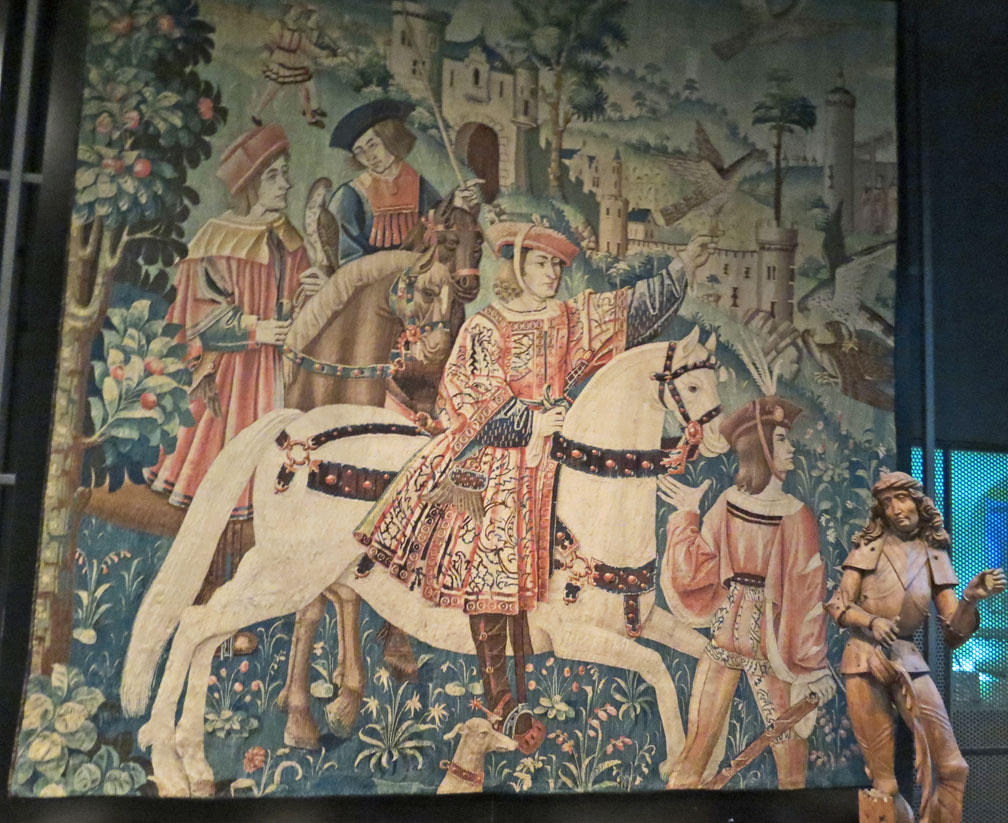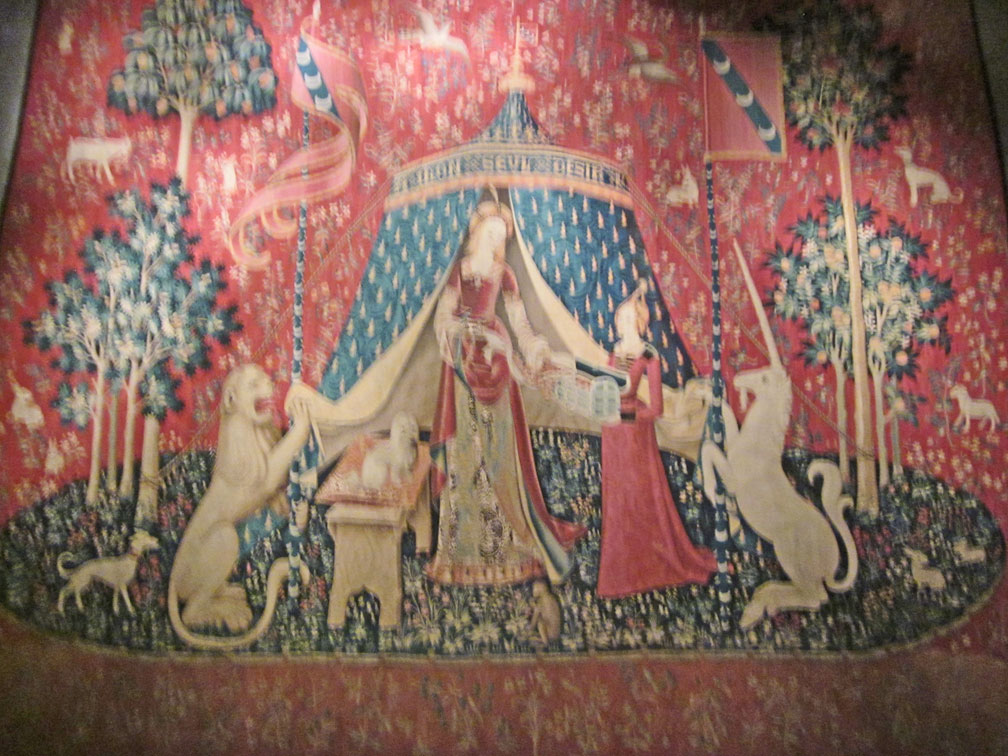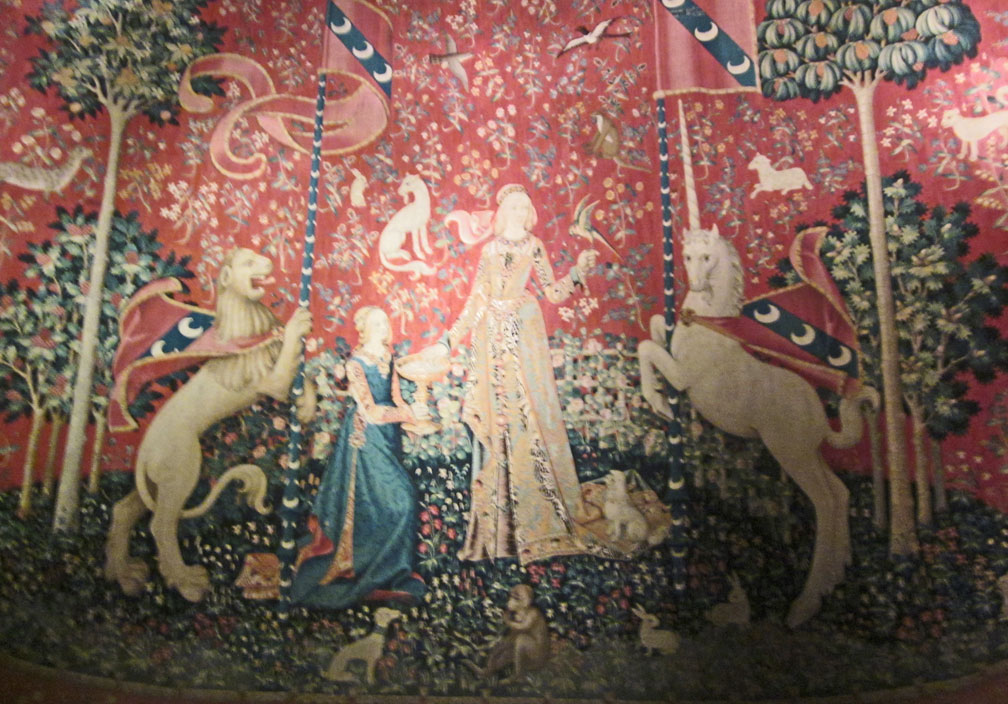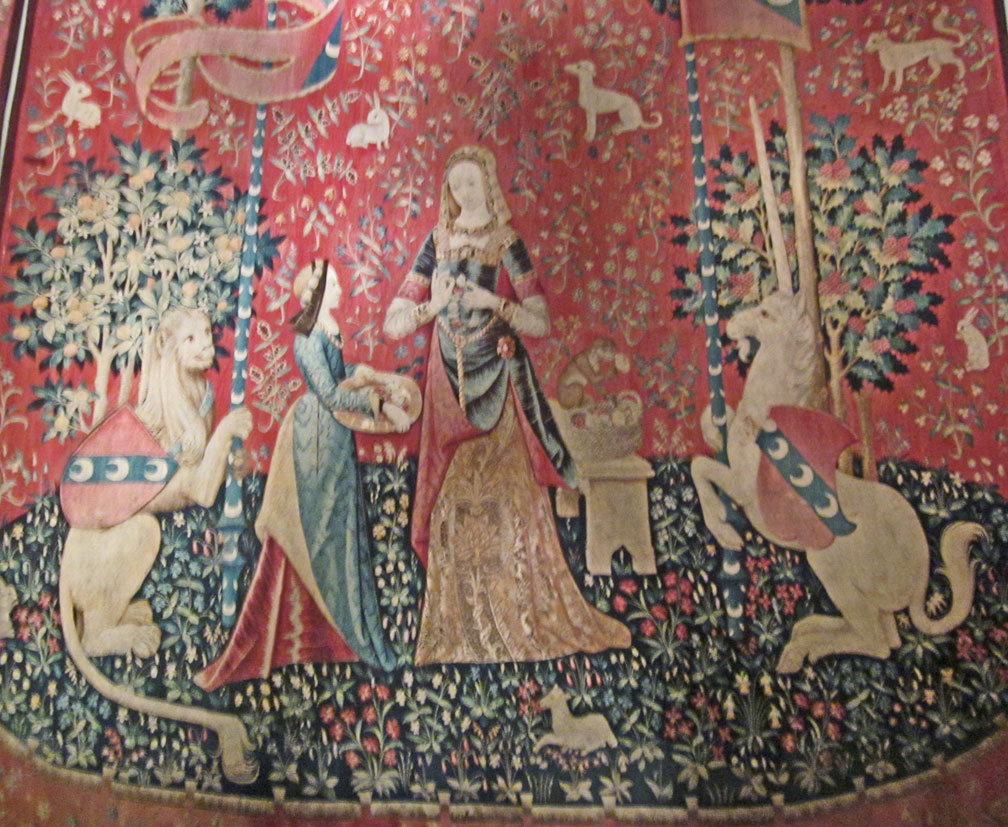

La Dame à la licorne tapestries
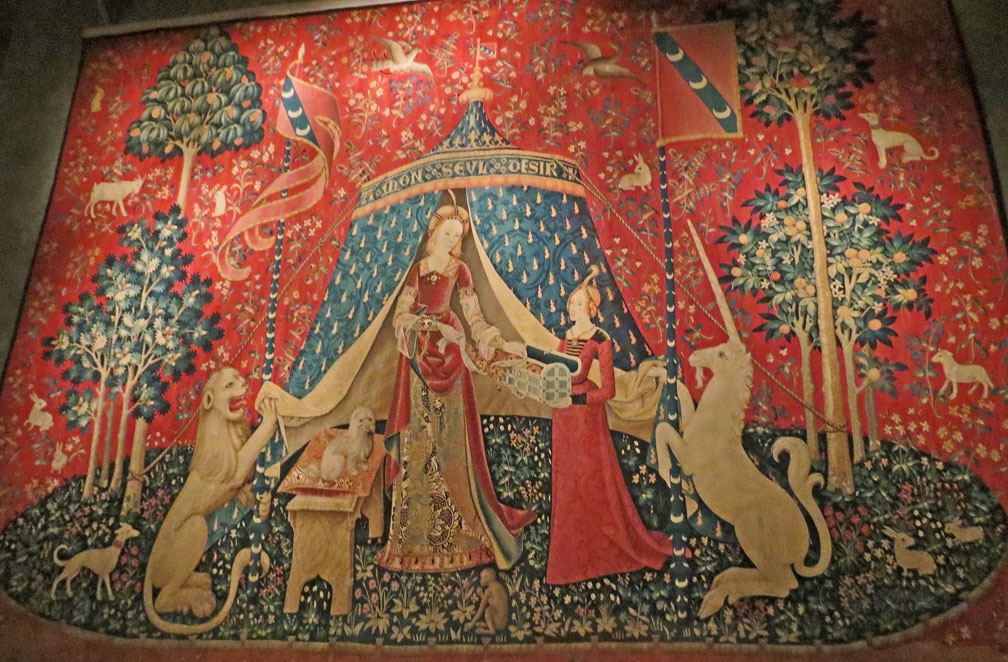
The Lady and the Unicorn (French: La Dame à la licorne) is the
modern title given to a series of six tapestries woven in Flanders of wool and
silk, from designs ("cartoons") drawn in Paris in the late fifteenth century,
The suite, on display in the Musée du Moyen-Âge, is often considered one of the
greatest works of art of the Middle Ages in Europe.
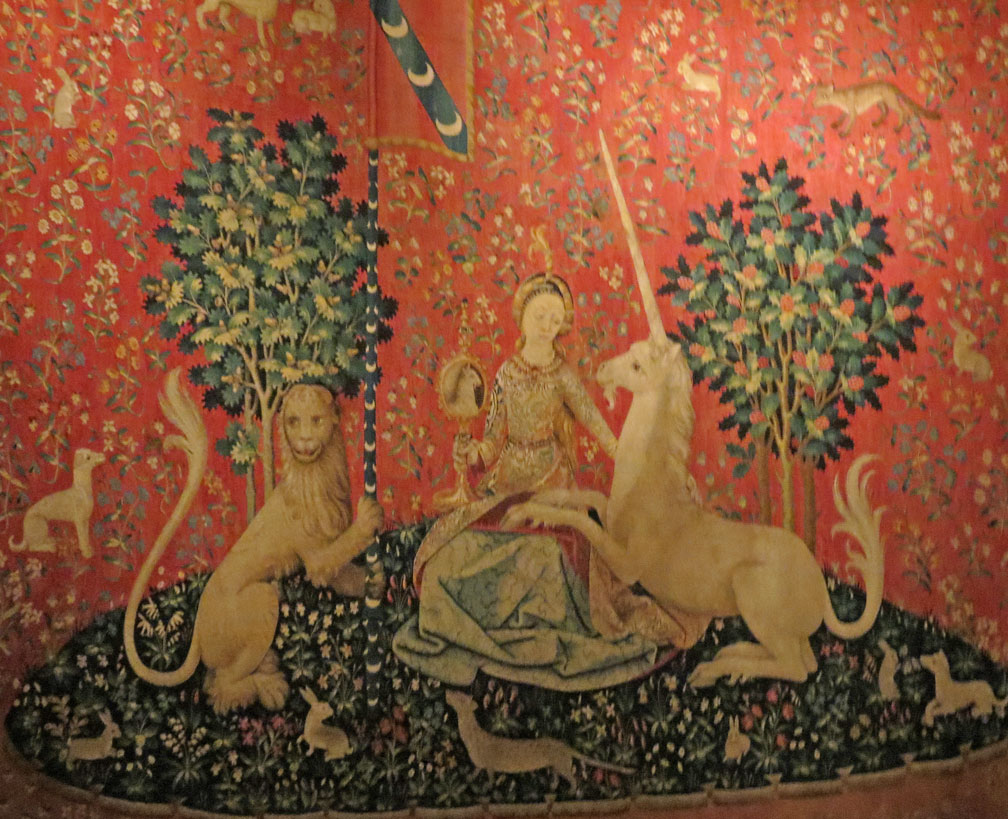
Five of the tapestries are commonly interpreted as depicting the five senses –
taste, hearing, sight, smell, and touch. The sixth displays the words "À mon
seul désir". The tapestry's meaning is obscure, but has been interpreted as
representing love or understanding. Each of the six tapestries depicts a noble
lady with the unicorn on her left and a lion on her right; some include a monkey
in the scene. The pennants, as well as the armour of the Unicorn and Lion in the
tapestry bear the arms of the sponsor, Jean Le Viste, a powerful nobleman in the
court of King Charles VII.
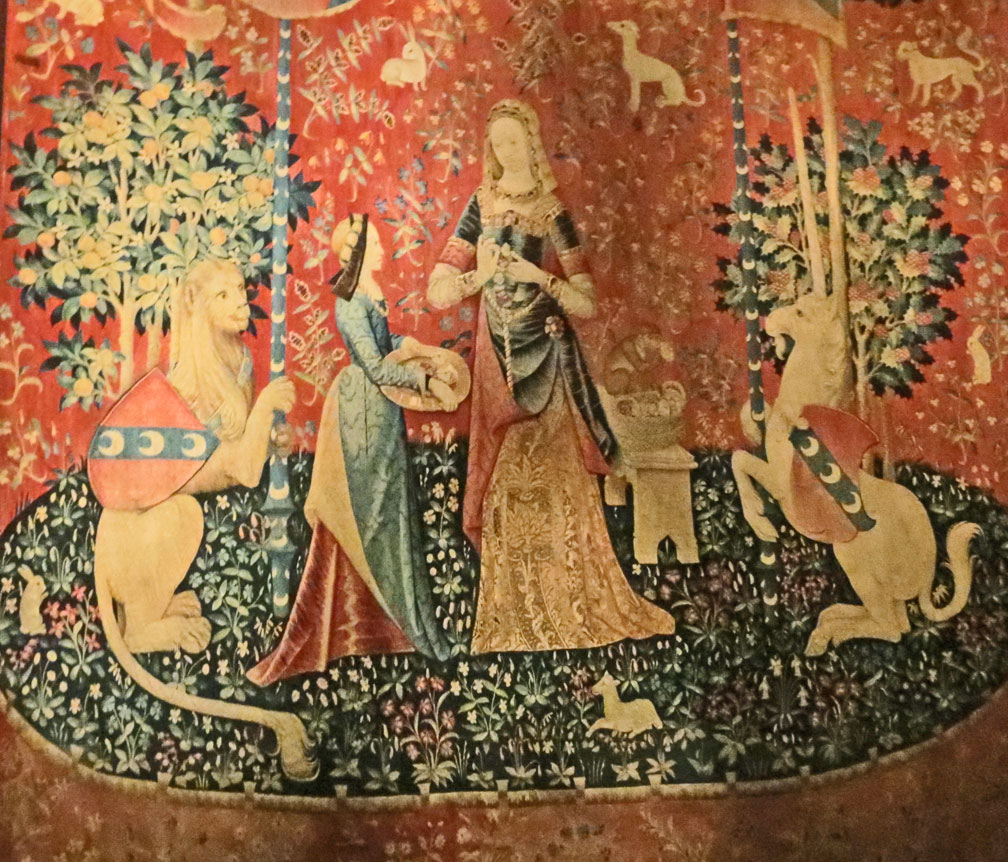
The tapestries are created in the style of mille-fleurs (meaning: "thousand
flowers").

The tapestries were rediscovered in 1841 by Prosper Mérimée in Boussac castle
(owned at the time by the subprefect of the Creuse) where they had been
suffering damage from their storage conditions. Novelist George Sand brought
public attention to the tapestries in her works at the time. The cycle is
currently held in the Musée de Cluny (Musée du Moyen-Âge), Paris (France), where
it has resided since 1882.
Text from Wikipedia
